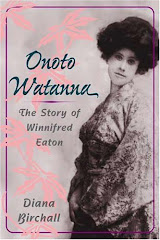Wimpole House
Wonderful day. Weather was the most peculiarly changeable I've ever seen
even in England, which is saying a great deal. Apparently it was because of Hurricane Bertha passing over, for every half hour whoosh! there was another change. Golden sunshine,
blustery splatters of rain, then sun again. Rather fun actually. Slept extremely
well, and in morning Jan and I went out for cappuccino and a monumental English
breakfast. Then we walked to the outdoor Cambridge market, which is lovely and
great fun, and to various shops to buy a present for her grandson's third
birthday. It was that moment when you've known somebody for years and suddenly
you find yourself shopping not for the children but the grandchildren; they
appear in a new light, as, to be sure, also happens much earlier in life when friends start having
children in the first place. (We settled on a wooden train set and a helicopter.) After a tea shop
stop, Harriett's near King's, to take in yet another in the row of Victoria
sponges I feel it essential to cram in this trip, we went back for a rest.
A good start to the day!
So happy to be in Cambridge.
In the afternoon Jan and Derek and I drove out to Wimpole Hall, a beautiful country house about eight miles outside Cambridge. It rained and sunned alternately, but we mostly managed to be inside the house during the spatters, and out in the gorgeous gardens during the sunny parts. The house, the largest in Cambridgeshire, was given to the National Trust by Rudyard Kipling's daughter, but it belonged to the Earl of Oxford and Lord Hardwicke before that, and the magnificent library in particular is a sight to behold. There's a grand Yellow Drawing Room designed by Sir John Soane, and the house is altogether a storehouse of treasures.
Walking into Wimpole
Beautiful library
Library ceiling
Beautiful books
A superb collection of Gilrays.
Wonderful curios
Queen Victoria visited Wimpole House
It's as beautiful outside as in, with vast grounds
including a sweeping formal grand avenue that goes for literally miles, that
Capability Brown put his touch on; and gardens galore. We spent most of our time
in the 18th century walled garden, bursting with flowers,
that had been only slightly flattened by the occasional bursts of rain. These lush and colorful blossoms were a contrast with the more geometric formal gardens closer to
the house, and the long views down the avenue set both off amazingly.
View from the window
View five minutes later!
And ten minutes after that!
For me, a favorite feature of such a great English country house, is seeing the verdant views framed in the windows, as overwhelmingly beautiful as any of the paintings inside. It's that great house indoor/outdoor feeling which Jane Austen captures perfectly in this passage in Mansfield Park:"The lower part of the house had been now entirely shown, and Mrs. Rushworth, never weary in the cause, would have proceeded towards the principal stair-case, and taken them through all the rooms above, if her son had not interposed with a doubt of there being time enough. "For if," said he, with the sort of self-evident proposition which many a clearer head does not always avoid—"we are too long going over the house, we shall not have time for what is to be done out of doors. It is past two, and we are to dine at five."Mrs. Rushworth submitted, and the question of surveying the grounds, with the who and the how, was likely to be more fully agitated, and Mrs. Norris was beginning to arrange by what junction of carriages and horses most could be done, when the young people, meeting with an outward door, temptingly open on a flight of steps which led immediately to turf and shrubs, and all the sweets of pleasure-grounds, as by one impulse, one wish for air and liberty, all walked out."
So, walking out in a burst of sunshine, we strolled over to the 18th century walled garden, a beautiful and old-fashioned delight.
Pictures in the Walled Garden
Jan and Derek
And then we walked back to the house and strolled around the formal gardens, enjoying their arrangement, and the long views...
Pictures in the Formal Garden
Beyond the gate of the formal gardens, you could see the farm animals...
With such miles of grounds, and the haphazard weather, we did not attempt to go to so far as the lakes or the Gothic folly, but I am assured that there is a great deal more to see!
Pub art. With a cat!





















































